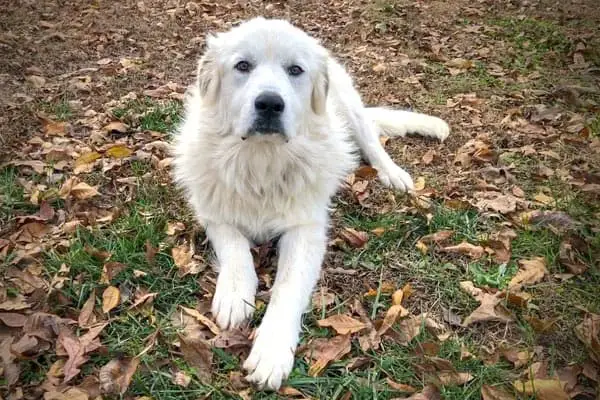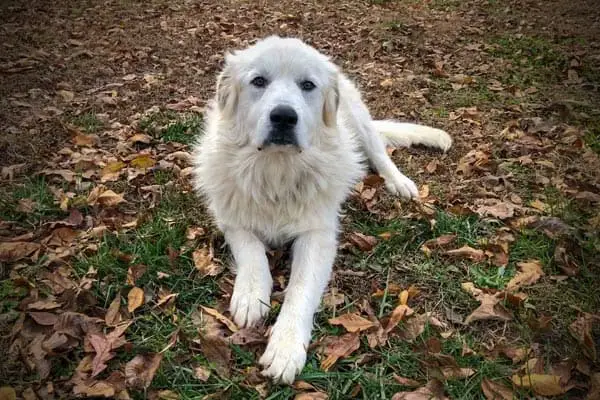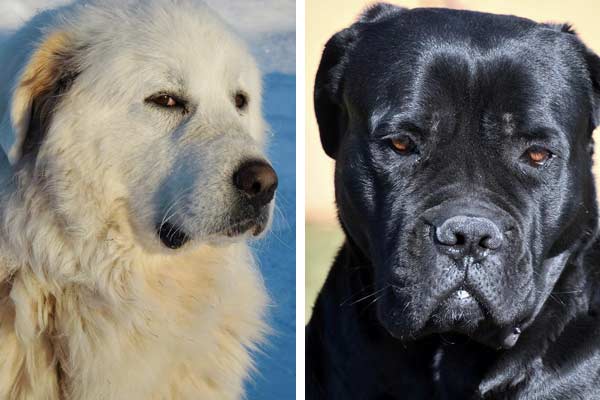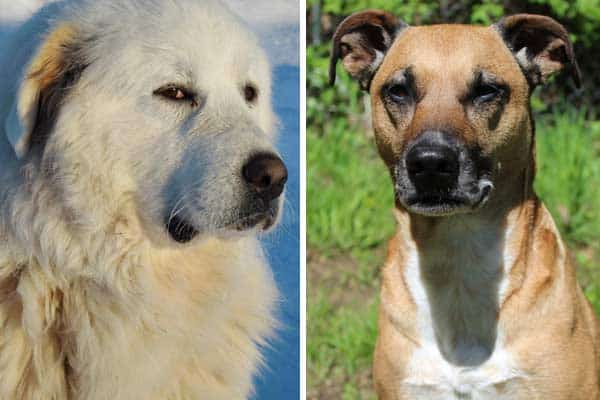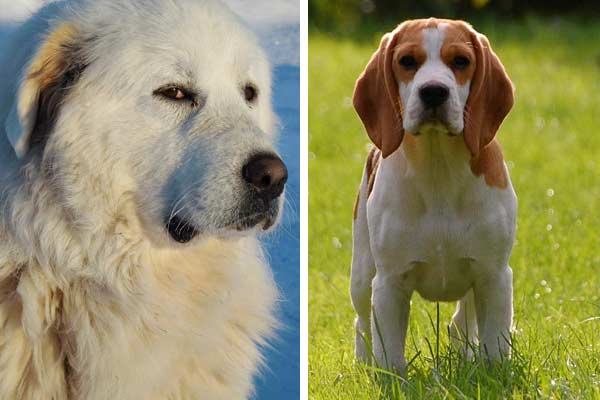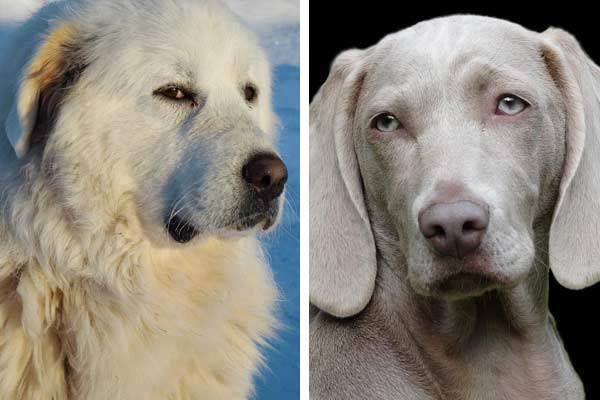Why Do Great Pyrenees Have Double Dew Claws? Discover the Reason
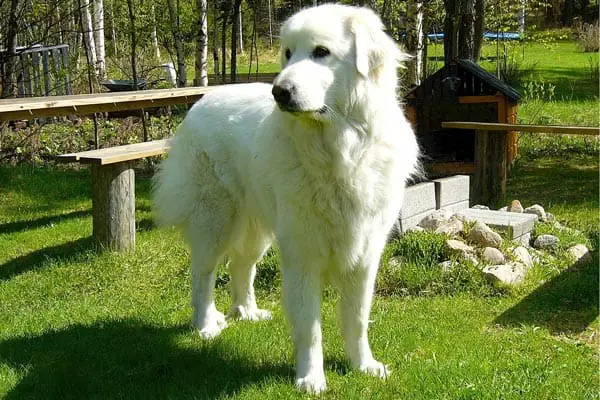
The Great Pyrenees dog breed is one of only a handful of purebred dog breeds in the world with double dewclaws.
If you are just learning about dogs or the Great Pyrenees breed, you may not even be sure what dewclaws are and what they are for, let alone why a dog needs two of them.
This is exactly why we are going to spend some time discussing this unique and important feature of the Great Pyrenees’ dog’s feet.
Those double dewclaws would not be there without a good reason. So let’s find out what it is!
Why Do Great Pyrenees Have Double Dew Claws?
Great Pyrenees have double dewclaws on their hind legs, a unique feature of their mountain-dwelling origins. These extra dewclaws provided stability on rough terrain, aided in climbing and running, and offered better grip on icy surfaces. While not essential today, they protect against injuries and help dogs grasp objects while chewing.
Learn More About the Great Pyrenees Dog Breed History
This short, interesting YouTube video gives you a quick overview of the history of the ancient Great Pyrenees dog breed, including the fact that double hind dewclaws are always present with purebred Great Pyrs.
The Great Pyrenees Rescue of Southern Ontario states that many people who are first getting introduced to the Great Pyrenees dog breed are understandably curious about why two dewclaws are present on the hind paws.
In the rare case that a Great Pyrenees puppy has only one dewclaw on each hind foot, there are two possible reasons:
1. The dog was born with a genetic malfunction that caused single dewclaws.
2. The dog has mixed canine genetics somewhere in the lineage.
What Are Great Pyrenees Dewclaws?
The Carolina Great Pyrenees Rescue charity offers a great explanation of what dewclaws (also spelled “dewclaws”) are and what they are used to doing.
You can also see photos and even an X-ray of a Great Pyrenees dog’s double dewclaws to help you better visualize its internal structure.
Dewclaws are extra toes on a dog’s foot. These toes are higher up on the paw – more in the area of what might be called the ankle if it was your foot – and do not usually touch the ground.
Some dog breeds do not have any dewclaws at all on their front or rear paws. Some dog breeds have single dewclaws on their front or rear paws or both.
And some rare dog breeds, such as the Great Pyrenees, have double dewclaws on their hind and single dewclaws on their front paws.
As Psychology Today explains, this unusual trait is called polydactyly, which means the dog has more than the standard number of toes.
Why Does the Great Pyrenees Have Double Dew Claws on Their Rear Paws?
Psychology Today’s canine expert Stanley Coren, Ph.D., points out that the presence of dewclaws on modern dog paws is like catching a glimpse into a dog breed’s distant genetic past.
Although we have no records dating back 11,000 years to when the Great Pyrenees dog breed is widely thought to have gotten its start, modern canine researchers believe the double dewclaws served as stabilizers for the feet.
As PetMD points out, there are two main types of dewclaws:
- A digit (toe) is attached by its dedicated bone to the structure of the dog’s foot.
- A digit (toe) is attached by skin only to the structure of the dog’s foot.
Dewclaws are attached only by the skin
The latter type of dewclaw – the type attached only by skin to the structure of the foot- is not thought to have any modern purpose.
It may be a vestigial dew claw – one that used to have a purpose hundreds or thousands of years ago but no longer does. And so today, it is still there but no longer even connected by bone because it serves no purpose.
In the case of this type of dewclaw, canine veterinarians and breeders often recommend removing the little flap of skin because it may get caught on something and cause skin abrasions or worse.
Dewclaws attached by bone and skin
But as you know, this is not the kind of dewclaws that a Great Pyrenees dog has.
The Great Pyrenees has fully functional dewclaws on all four paws – two on each hind paw and one on each front paw.
These dewclaws are connected by bone to the rest of the foot’s structure and serve a purpose to the dog.
While some dog breeders may choose to remove the dewclaws on their puppies, this is not customary among Great Pyrenees breeders. The reason is simple: the American Kennel Club (AKC) purebred show dog standard indicates the dewclaws should remain.
A Great Pyrenees dog with its dew claws removed cannot be shown under AKC standards even if the dog conforms in every other way.
Other Reasons Why You Do Not Want to Remove Great Pyrenees Dew Claws
The number one reason you don’t want to remove your Great Pyrenees dog’s dew claws doesn’t even have anything to do with wanting to show your dog in AKC dog competitions.
It is because it is simply not necessary.
There is no purpose for removing bony dewclaws because these digits present no immediate health risk (certainly no more than any other digits on your dog’s feet), and they are integral to the structure of your dog’s paws.
As Carolina Great Pyrenees Rescue points out, while many canine veterinarians downplay the invasiveness of this surgery, it is major surgery.
And it is totally unnecessary as long as no other underlying health issues prompt concern over the presence of a Great Pyrenees dog’s dewclaws.
The surgery requires the amputation of both dew claw toes from each hind paw. This means disconnecting the nerves, muscles, and tendons and cutting the bone that attaches the dewclaws to the rest of the dog’s foot structure.
Once a structure is missing in the paw, the rest of the foot is forced to compensate. A lot of healing needs to take place inside the paws. The entire structure of the paw must regroup and reposition itself to work without the missing toes.
When dew claw amputation surgery is done before the Great Pyrenees dog grows up, the risk increases again.
The Great Pyrenees is a giant dog breed, and these puppies grow slowly. They need to pace their growth over a period that can stretch from 18 months to up to four years to avoid putting undue pressure on their bones and internal structures.
When a breeder or veterinarian chooses to remove the dewclaws in puppyhood, this can impact how the paw grows and develops as the dog grows up. In more than a few cases, the dog will grow up to have lifelong issues because of the early amputation.
When Is It Okay to Remove a Great Pyrenees Dog’s Dew Claws?
The choice to leave or remove a dog’s dew claws is still considered a breeder or owner choice. It is something that some breeders will do, and other breeders will not do.
With the Great Pyrenees dog breed, removing dewclaws is much less common because the Great Pyrenees Club of America has decided to include intact dewclaws in the official show dog breed standard.
This is a boon to Great Pyrenees dogs and their owners because it minimizes the likelihood that a breeder, veterinarian, or owner will choose to have the optional dewclaw removal surgery performed on a puppy or adult dog.
However, as PetMD points out, there may be times when it is medically smart to remove a dog’s dewclaws.
Dewclaws are canine toes. They have the same basic structure as toes, with bones on the inside and a sharp claw on the outside. Treat it like removing one of your toes whenever you are considering amputation of dewclaws.
So here are some reasons why a Great Pyrenees owner might choose to remove one or more dewclaws.
Ingrown dewclaw nail
Sometimes the nail on a dewclaw can become ingrown. This is not unlike what you might experience when your nail becomes ingrown.
However, since your nails are not covered in thick fur, you will usually notice the issue sooner and take steps to correct it.
Since your dog can’t tell you in words that the claw has become ingrown and is starting to hurt, it may take you until the dewclaw itself has become swollen, inflamed, or infected and your dog has become lame to notice.
In this case, depending on the case and your dog’s age, your veterinarian may choose to try a treatment or may remove the dewclaws. This is an incredibly individual decision that should be approached on a case-by-case basis.
Dewclaw keeps getting caught
In some cases, dog owners report that their dog’s dewclaws are continually getting caught while the dog is out playing or working, or just being a dog.
While the dewclaws are present from birth in a purebred Great Pyrenees and were originally quite useful to help these herding and protection dogs stay balanced and stable while doing their job guarding sheep on uneven and sometimes steep terrain.
But if you have different terrain on your property and your dog’s dewclaws are getting perpetually caught on underbrush, tree debris, rocks, or textured terrain, eventually, the recovery time after each treatment may begin to impact your dog’s quality of life.
Again, this is an incredibly individual decision and should only be undertaken when the payoff to your dog’s health and quality of life is substantially improved by removing the dewclaws.
Dewclaws develop serious dystrophy or disease.
Dystrophy is a disorder that affect the nail, claw, and surrounding toe in canines and other animals.
Dewclaws can develop various diseases ranging from fungal or bacterial infection to tumors and bone cancer. Sometimes amputating the affected dewclaw may prevent the spread of cancer to other areas of the dog’s body.
As Whole Dog Journal explains, health issues that affect the claw (nail) will sometimes spread to the soft tissue and skin surrounding the nail.
Sometimes a persistent infection can be a symptom of deeper health issues with the thyroid or endocrine system or an autoimmune disease.
Persistent swelling, inflammation, pain, infection, and redness can also be a warning signs of canine cancer. This is much more common in older dogs.
How to Check Your Great Pyrenees Dog’s Dew Claws
At WSU Veterinary Medicine clinic explains that the dewclaws do not touch the ground like the other claws.
This means they don’t get worn down naturally like the other claws. So you will want to check and clip the dewclaw nails to prevent them from growing too long and getting caught on something or growing into the dog’s ankle.
You will also want to trim the hair around the dewclaws so it is easier to check and trim them.
The best way to learn is to ask your veterinarian or dog’s groomer to show you.
